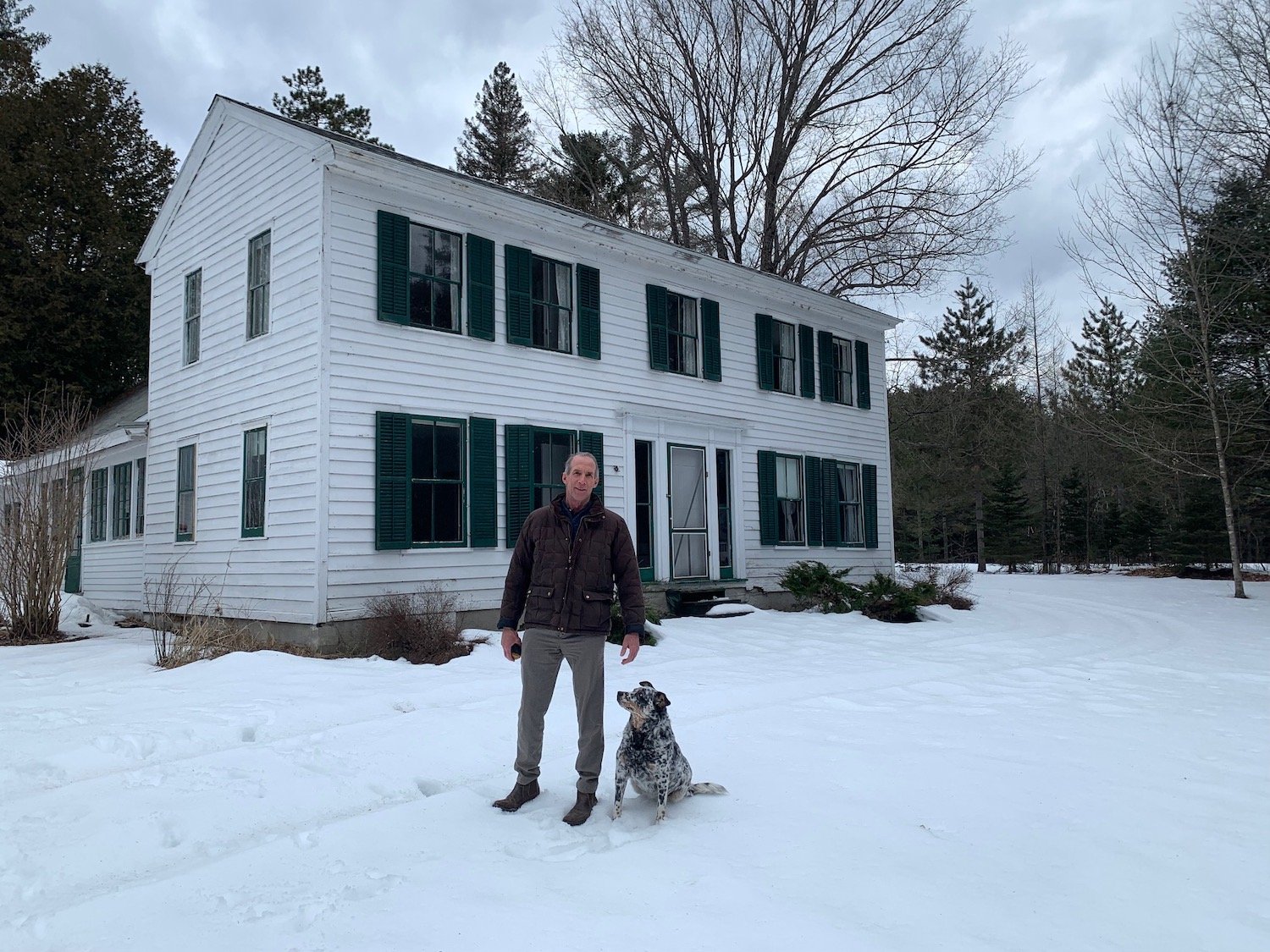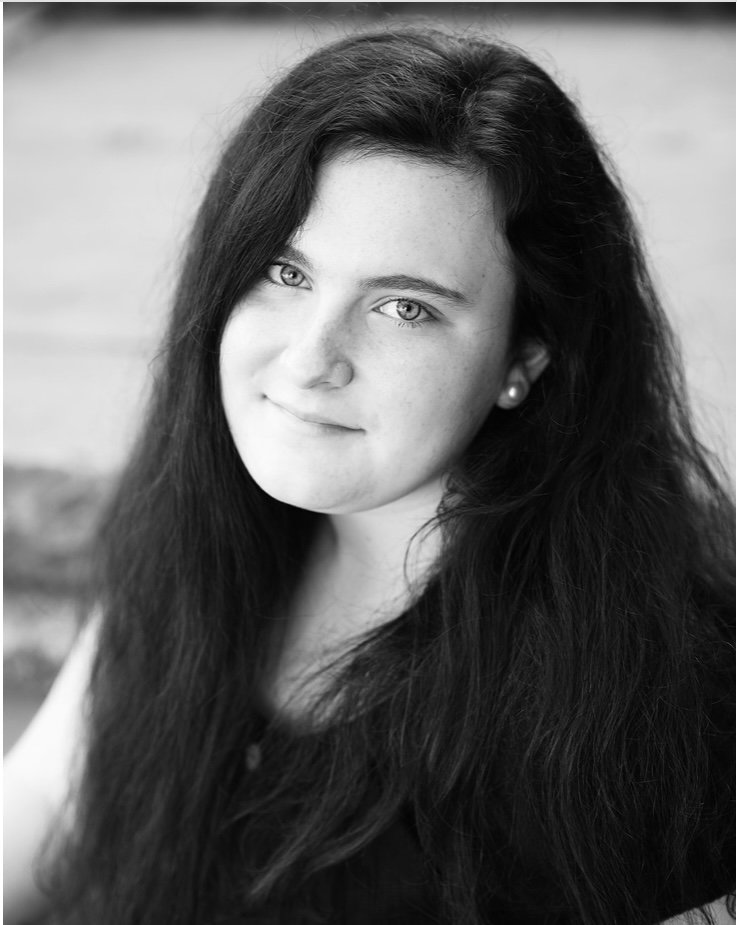Stories of Underground ‘Railroads’
Jacqueline Madison with the New York Freedom Timeline, a key reference for our project. (Click to enlarge.)
A library information manager with a degree in chemistry, Jacqueline Madison was named President of the North Country Underground Railroad Association in 2012, the same year the organization opened its North Star Underground Railroad Museum in the Town of Chesterfield Heritage Center. She was formerly an information analyst with Pfizer for 13 years.
“We tell the stories of the Underground Railroads, which I intentionally say with an ‘s,’" Jacqueline explains. "These stories consist not only of fugitive slaves or ‘freedom seekers,' but also of Chinese immigrants who came through after the Exclusion Act of 1882, as well as immigrants today.”
“What I find fascinating is that so many people in the North Country were determined to do all that they could to end slavery," Jacqueline adds.
The museum was established by Don and Vivian Papson, who became intrigued by the Underground Railroad while researching the involvement of African Americans in the War of 1812 and decided to share with the community what they'd learned. In 2019, the town of Chesterfield actually donated to the project a building the town had been given by Ausable Chasm Outdoor Resort.
It was via the Underground Railroad that enslaved African Americans before and during the Civil War were able to gain their freedom from bondage by escaping to Canada. Slave catchers and enslavers watched for runaways on expected routes of escape and offered rewards to encourage public complicity in apprehension.
“The entire time frame of people escaping would've mostly been during the Fugitive Slave Acts, the first of which was passed in 1793, and extending through the end of the Civil War,” says Jacqueline. “Estimates of the total number of escaped slaves range between 40,000 and 100,000. We believe that between one-quarter and one-third of those people made their way through our area.”
Among the North Star Museum’s many distinctive exhibits is its New York Freedom Timeline, which serves our project as a great reference. We don’t think of New York as a slave state, but we arguably once were, starting with the Dutch West India Company’s outpost at Fort Orange in 1626.
Religion as a Catalyst
Religion within Warren County and beyond would be a catalyst in the operation of the Underground Railroad.
The gravesite of the Rev. Enos O. Putnam, the fiery abolitionist who led the Mill Creek Wesleyan Methodist Church in Johnsburg, and his wife Sybil is easy to find in the church’s cemetery on Garnet Lake Road.
"The Quakers were independent and wanted freedom for all,” says Jacqueline. “That doesn't mean -- in the very beginning of slavery -- Quakers didn't own slaves. Even during the Fugitive Slave Act, some did.
"When the Quakers decided they would no longer be involved in slavery, they started by expelling slave-owners from their meeting houses. Generally in the North Country, we saw both pro- and anti-slavery factions. Some made their livings in industries that relied on slave labor. Just as today, people wanted to protect their jobs to bring in money for their families.
"While Quakers mainly drove the operation of the Underground Railroad in the North Country, they weren’t alone. In Chester, we had the Rev. Joseph Leggett of the Darrowsville Methodist Church. He made connections with other religious figures in Warren County, such as Rev. Enos Putnam and Rev. John Folsom, who aided transporting freedom-seekers to the Canadian border. All three were known for their outspoken nature within their congregations.
“The Presbyterians, the Methodists, and the Baptists had split congregations when it came to slavery. I would place Quakers first in their opposition, then Baptists, and Methodists. There was still a split between those that wanted to end it and those who were involved and benefiting from slavery. A Catholic congregation was split on slavery as well.”
Routes to Freedom
Joseph Leggett of the Darwinsville Wesleyan Methodist Church was a leader in the abolitionist movement and a “conductor” on the Underground Railroad. His home today is the residence of Craig Leggett, Chester Town Supervisor.
Freedom-seekers had three main routes to freedom when they came up through the Albany area, says Jacqueline.
"One was to come up through the mid-western part of the state through the Utica or Syracuse area.
"Another was to go further west and cross into Canada through around Buffalo.
"Or they could go due north through the Adirondacks to the west of Lake Champlain or through Vermont to Lake Champlain’s east. They could cross at Rouse's Point or go west to Ogdensburg."
"While all of these routes were important, the Adirondacks continued to be the safest and most traveled route. Their wooded and rural nature made them ideal for travel, and maintaining a low profile. Freedom-seekers were able to travel both by night and by day, making their trip much faster and safer. To avoid being captured, they often meandered through the various brooks and streams of New York to keep scent away from dogs.
"Canal boats ran at that time on the Hudson and Lake Champlain. Some of the captains on those boats were sympathetic to the plight of freedom seekers and would actually allow them to hide on the boats to get to their next stop.”
Points of Interest
We're asking experts in all of our collaborations to help us write points of interest (POIs) we can pin to our story maps on the web and our story clouds, which will be downloadable as audio on your phones and triggered by GPS as you approach them.
Since little in the way of records was kept, that's a bit of a challenge with the Underground Railroad, says Jacqueline. In verifying "stations," she says, "the first thing you check is the year the home or building was constructed."
The North Country Underground Railroad Historical Association is raising funds to purchase the former property of Quaker abolitionist and Underground Railroad conductor Stephen Keese Smith and do extensive repair work.
"Then you need to talk to family descendants, neighbors, friends or a part of the community that might remember anything about the Underground Railroad. Diaries can be a great resource in assembling a story."
Where might fugitive slaves have found shelter further north on their journeys after Warren County? Here are several "POIs" she gave us:
Stephen Keese Smith Farm. Keeseville. From the 1840s onward, Stephen Keese Smith provided refuge in a hidden barn room behind his farmhouse for an estimated 400 enslaved persons.
Home of Noadiah Moore. Champlain. Noadiah and his wife Caroline helped to bring freedom-seekers to the safety of Canada. "Noadiah even would even offer jobs at his factory to those he encountered."
Fitch Hill. "Named for the African-American man, Fitch, who resided upon this hill. Fitch gave freedom-seekers a place to stay and rest after crossing the hill."
We’ll try to learn more about these and “pin” them to our StoryMap in development, Exploring Warren County’s Underground Railroad.
The Underground Railroad Today
The North Star Underground Railroad Museum reveals the hidden history of the Champlain Line of the Underground Railroad. It’s located in the Town of Chesterfield Heritage Center. You’ll find its “virtual museum” here.
Another POI we'll surely include on our story map is Roxham Road, a five-mile rural road that runs from a hamlet in the town of Champlain into Quebec. It has existed since the early 19th century, before U.S.-Canada border was established at the 45th parallel.
"After the Civil War, Roxham Road remained an important route of escape for Chinese immigrants following the Chinese Exclusion Act of 1882," says Jacqueline. "We estimate that more than 35,000 immigrants have gone into Canada via Roxham Road, and it still holds a great deal of significance for immigrants moving from America to Canada."
“Between 2017 and 2020, you might have seen stories of immigrants flying in or coming into the U.S. and then going up to Roxham Road," Jacqueline says. "It continues to be a heavily traveled route. We have an organization called Plattsburgh Cares that tries to provide assistance to travelers. They can't help immigrants cross the border or provide legal aid, but they can provide such items as coats, gloves, hats, snacks, and toys and books for children."
This road to freedom would prove to be popular among young adults wishing to escape the draft during the Vietnam War.
“My insurance agent told me he actually came to Plattsburgh State because he had several brothers and he knew he would be drafted," says Jacqueline. "Since Plattsburgh is only 60 miles from the Canadian border, he could easily cross into Canada if he were to be drafted."
Allison Comstock
A graduate of Glens Falls High School who is now a junior history major at SUNY Plattsburgh, Allison Comstock joined our team last fall. That's also when she began an internship at the North Star Underground Railroad Museum. We’re developing Exploring Warren County’s Underground Railroad on the Warren County Planning Department’s GIS Hub. It was obvious from the outset that this should be her main Smartacus assignment.
Allison has gone through the museum's collections and read numerous books and journal articles. She also has embarked on a series of interviews with experts in Zoom. This is our first, featuring Jacqueline Madison, president of the North Star Museum, with whom Allison has been working for the last six months.





